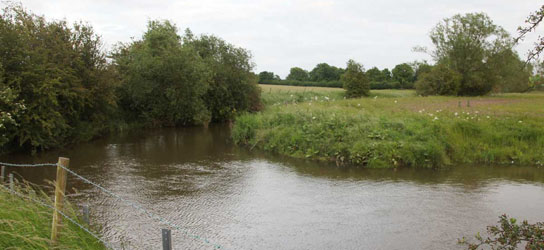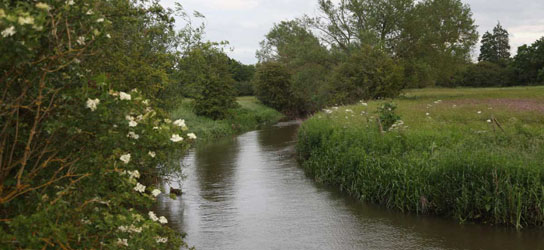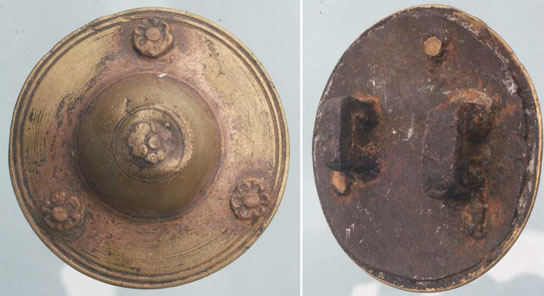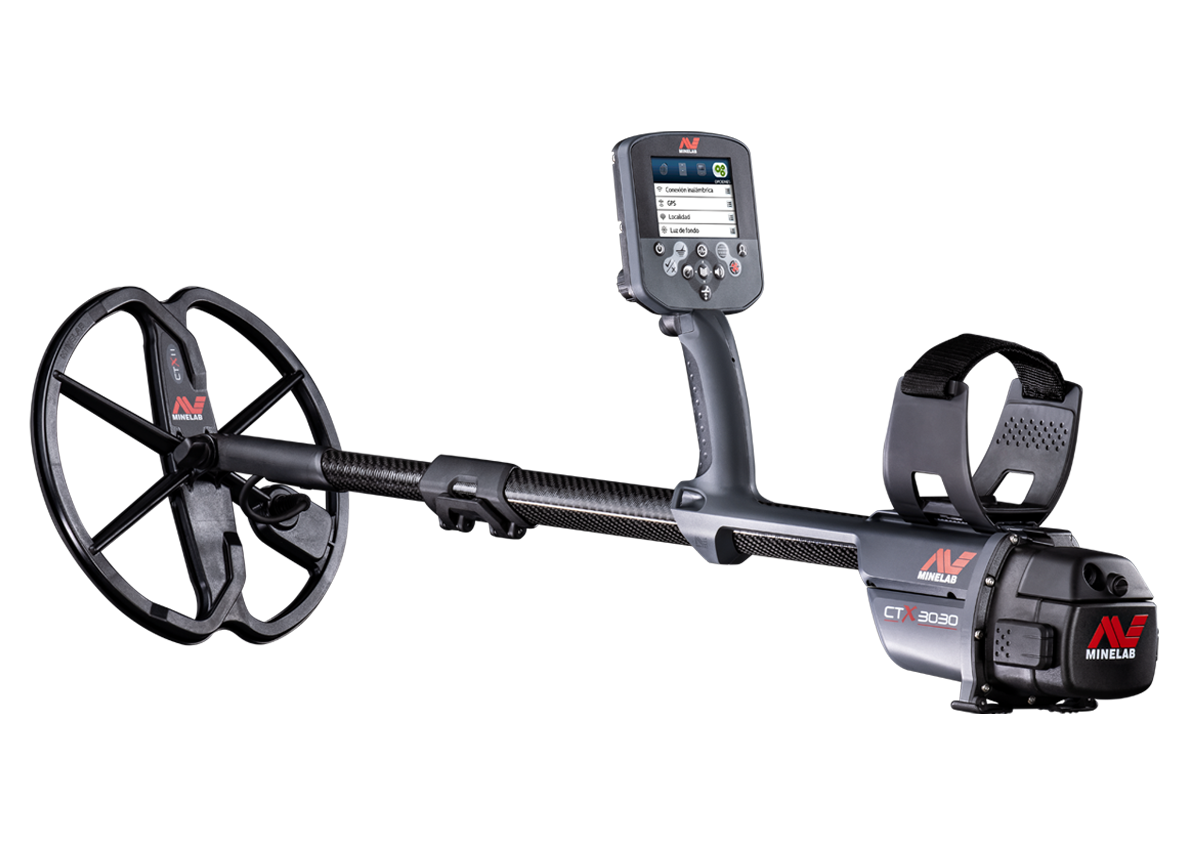So you’ve got all the equipment, and permission to search a section of river… So where do you start?
Like all aspects of metal detecting, research is the key for consistent success. I spend hours viewing old maps of river courses, trying to discover old crossings or long forgotten historical features.
Where to search
Some areas of a stream will produce more than others.
If it runs deep in the middle and shallow at the banks, good finds tend to hug the sides.
The inside of bends is another good area. This is where the water runs slowest in a flood, sometimes depositing heavier metal object.
 Bend in river
Bend in river
Often you will see an eroding bank. These areas produce items that have recently fallen into the water. Finds tend to be tight into the bank, where the currents have removed the lighter soil particles, leaving the heavier metals.
Fallen Willow trees are also worth a search. In a flood these become a major obstacle to the water flow, causing lots of turbulence, which cuts away the riverbed. Trees have been responsible for some of my most spectacular finds after heavy flooding.
Another hot area can be at the end of any long straight. What you tend to find in these situations is a gradual shallowing of water as it approaches a bend. The items in these areas may not have been carried there by fast water. More likely travellers crossing at these shallow points dropped them.
 Straights
Straights
Fords and bridges are by far the most productive areas of any watercourse. Some of these fords are obvious, and can still be seen on maps or aerial photographs. Dips in banks or hedge lines that cross water are good evidence.
 Ford
Ford
What I have discovered here in the UK, is you can expect a crossing every quarter of a mile or so. Through history most travel would’ve been by foot or horseback, and if the obstacle of a river confronted a traveller, he would seek the nearest possible crossing. Today only the best crossing are still is use, where bridges now stand on modern roads. But this is a tiny percentage of all the crossings, so there are lots of forgotten fords waiting to be discovered.
Fords
The main characteristic of a well-used ancient ford is a hard-packed riverbed. Constant compression of silts and gravel as people cross turns the loose riverbed into a concretion, sometimes as hard as concrete. Anything dropped during this process is “sealed in”. All air is driven out producing an anaerobic environment, where finds can remain in exactly the same condition as when they were lost.
 Roman coins
Roman coins
Recovery can be a problem, as a scoop can’t penetrate such hard material.
I use a five-foot crowbar, and carefully loosen the gravels away from the target. Once loosened, the find can be scooped or retrieved by hand.
 Medieval bridal boss
Medieval bridal boss
In part 3, I will be showing how I setup my CTX 3030 for this type of detecting.
Now get out there and find something!
Gordon Heritage





















Comments